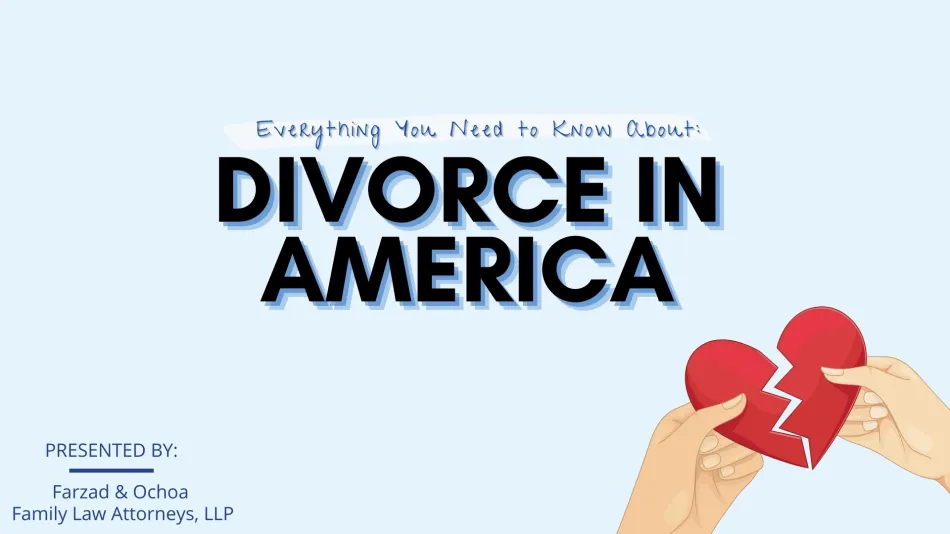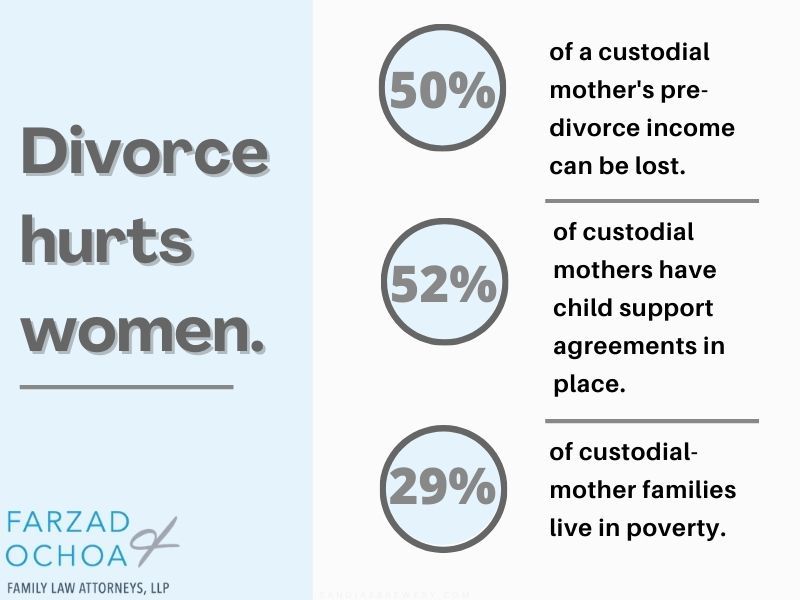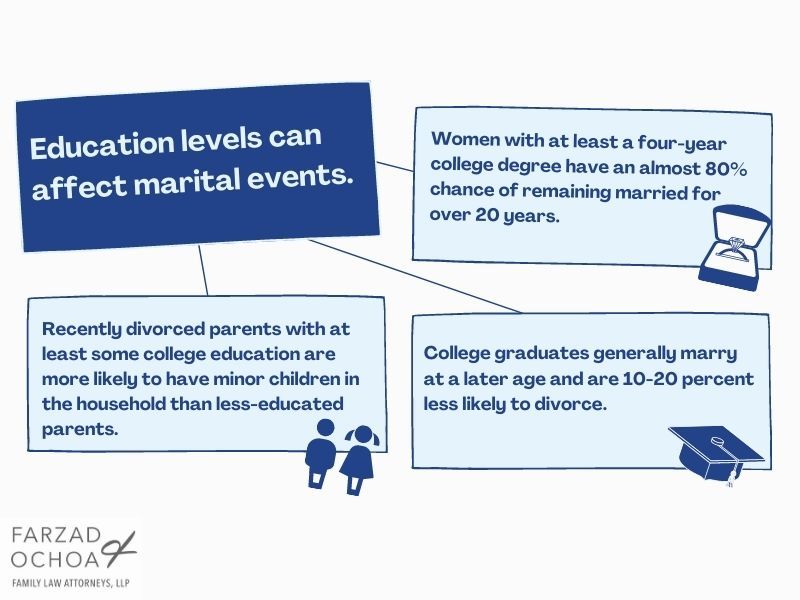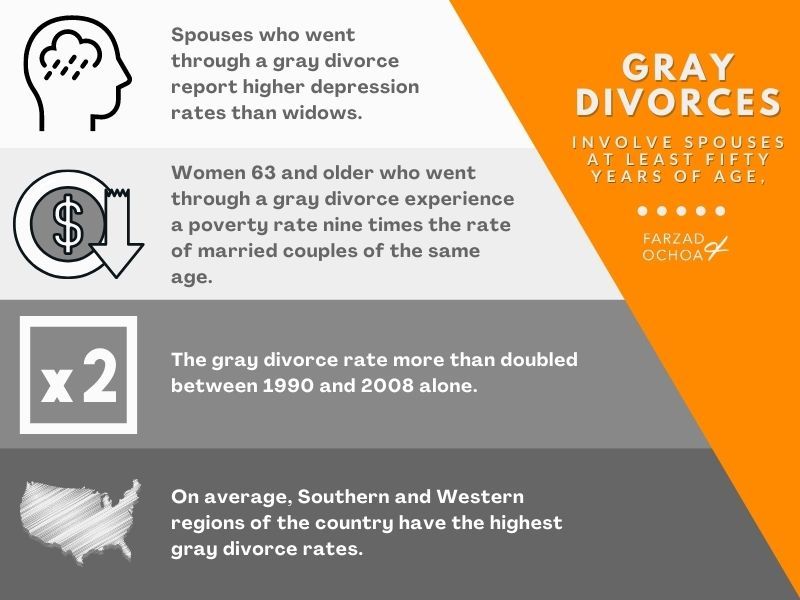75 Divorce Statistics About Rate, Race, Gender, Children, Money, and More
Simply the best guide on divorce statistics for researchers, writers and knowledge seekers
Divorce statistics matter more than you realize
Why are divorce statistics important? Do statistics tell us anything other than divorce is prevalent in the United States? The answer is yes and it is here you will learn why.
Divorce statistics are not only about the divorce rate
Statistics are about divorce's cost, access to courts and the justice, divorce's affect on children and so much more.
Countless television and op-ed writers cover divorce and marriage in their work every year.
Their coverage of family law cases, marriage rates, and divorce consequences are often inaccurate.
This guide on divorce statistics brings you accurate and up-to-date information
Keep reading to find out if half of American marriages end in divorce, whether divorce is contagious, and why a couple might benefit from having a cheaper wedding.
Prefer to watch a video on divorce statistics?
We have that for you too.

We hope you enjoy this video on divorce statistics. For those who need an accessible transcript, please click on this link: transcript
American divorce and marriage rates are dropping

- There were less than three divorces per 1,000 total people in 2018 for a total of 782,038 divorces.
- Nearly 50% of all Americans aged 18 and older were married in 2017 compared to 58 percent in 1990.
- Remarriage rates have dropped in recent decades by almost 50% for women and 60% for men.
- The first marriage rate decreased from 49.8 first marriages in 2008 to 43.1 in 2013.
- The divorce rate for men and women under age 35 has declined.
- The majority of Americans believe marriage is not essential to living a fulfilling life.
- Approximately 25% of parents living with a child are unmarried.
Divorce litigation adds 300% to 600% to its cost

The average mediated divorce costs about $5,000, and the average litigated divorce ranges from $15,000 to $30,000.
Household income affects marriage and divorce rate statistics

- Low-income Americans are more likely to substitute marriage with cohabitation.
- Americans living in poverty are more likely to be single than middle- and upper-class Americans.
- Couples where a husband does not work full-time and the wife is the income-earner are 33% more likely to divorce.
- Couples with an annual income that exceeds $50,000 have a 30% less chance of getting divorced.
- The percentage of middle-class children living with married parents has steadily declined from 86 to 75 percent over the past 40 years.
Divorce rates are higher during certain months
- Spouses are more likely to divorce in March and August and least likely to do so in November and December.
- Divorces spike during epidemics and pandemics, such as SARS and COVID-19.
Lifestyle choices affect divorce rates
- Spouses with different drinking habits are more likely to divorce than spouses that drink alcohol in similar amounts.
- People who attend religious services weekly are 15 percent less likely to have divorced than those who rarely attend.
- Someone with a religious affiliation is 14% less likely to get divorced.
Men and women experience different divorce outcomes

- About 52% of all custodial mothers have child support agreements compared to 31% of custodial fathers.
- Approximately 29.2% of custodial-mother families live in poverty compared to 16.7% of custodial-father families.
- Custodial mothers could lose up to 25% to 50% of their pre-divorce income.
- Divorced women are more likely than men to receive public assistance, live without health insurance, and have less earning potential.
- Approximately 22 percent of women divorced in the past 12 months live in poverty than 11 percent of men.
- Nearly 98% of people receiving alimony are women.
Divorce negatively affects most children

- Children raised in "high-conflict" households whose parents remained married were more likely to divorce than children of high-conflict parents who divorced.
- Children of divorced parents are more likely to engage in high-risk sex and experience poverty.
- Children of divorced parents have an increased chance of dropping out of school, using substances or experiencing depressed moods.
- Canadian men whose parents divorced during their childhood are three times more likely to consider suicide than men whose parents remained married.
- Girls living with their fathers after a divorce are more likely to attempt suicide than girls living with their mothers.
There are racial disparities in divorce behaviors
- The group most likely to divorce their spouse is Black women between the ages of 50 and 59.
- Asian men and women have the highest median age for their first divorce at 43.7 and 43.2, respectively.
- Recently divorced parents that are white are more likely to have minor children in the household than other ethnicities.
Education levels affect marital events

- Women with at least a four-year college degree have an almost 80% chance of remaining married for over 20 years.
- College graduates generally marry at a later age and are 10-20 percent less likely to divorce.
- Men and women with a high school diploma or less are less likely to marry than their more educated counterparts.
- Recently divorced parents with at least some college education are more likely to have minor children in the household than less-educated parents.
Divorce rates varies by region
- Hawaii has the lowest divorce rate, with ten marriages per 1,000 ending in a divorce.
- Arkansas has the highest divorce rate, with 25.5 marriages per 1,000 ending in a divorce.
Age plays a role in the divorce rate
- The divorce rate for those aged 50 and older is twice as high as it was in 1990.
- Divorces rates among 15- to 24-year-olds are the lowest of any age group and decreased by 43% between 1990 and 2017.
- Approximately 45% of couples cite "marrying too young" as a reason for divorce.
- Someone that marries at age 25 or later has a 24% less chance of divorcing.
"Gray divorces" (spouses at least fifty years of age) are on the rise

- Spouses who went through a gray divorce reported higher depression rates than widows.
- Women 63 and older who went through a gray divorce experience a 27% poverty rate, which is nine times the rate of married couples of the same age.
- The gray divorce rate more than doubled between 1990 and 2008 alone.
- On average, Southern and Western regions of the country have the highest gray divorce rates.
A divorced person's future is not always promising

- People that divorce become less popular and are sometimes perceived as threats by married friends.
- Someone who experiences a separation or divorce has a 23% higher mortality rate than someone who doesn't experience either.
- Up to 67% of second marriages end in divorce, and up to 74% of third marriages end in divorce.
Divorce affects work performance and salary
- Hedge fund managers underperform by 2.3% annually for up to two years following a divorce.
- On average, CEOs of major companies receive a salary raise and other benefits of over $2 million following a divorce.
Spending habits affect marital outcomes

- A $2,000 to $4,000 engagement ring correlates with a couple being 1.3 times more likely to divorce than a $500 to $2,000 engagement ring.
- Spending over $20,000 on a wedding increases a couple's chances of divorce by 3.5 times than spending $10,000 or less.
- The larger the gap between a couple's credit scores, the more likely they will separate within the first five years.
- Couples that place all their money into joint bank accounts are less likely to break up than couples that put some or all of their money into separate accounts.
A person's social network affects their marital outcomes

- A spouse is 75% more likely to divorce if a friend is divorced.
- A spouse is 33% more like to divorce if a friend of a friend is divorced.
- Someone with more friends in their social network is less likely to divorce than those with fewer friends.
- Republicans are less likely to be divorced than Democrats.
Divorce rates vary by career
- Physicians are less likely to divorce than non-healthcare providers and several healthcare professions.
- Gaming managers have the highest divorce rates.
There is a correlation between disabilities and divorce rates
- Someone who experiences the onset of a disability is more likely to get divorced.
- Veterans living with PTSD have an elevated risk of divorce.
Divorce rates vary by sexual orientation
- About 78% of all same-sex divorces in the UK are among lesbian couples.
- The number of same-sex couples that divorced in England and Wales increased by threefold from 2016 to 2017.
Child support is a source of stress for ex-spouses

- Only 44% of custodial parents receive the full amount of child support.
- The aggregate amount of child support due in 2015 was about $33.7 billion.
- About 75% of child support is collected by income withholding from a parent's paycheck.
- Child support checks make up about 50% of impoverished parents' incomes.
- The child support program uplifted nearly 750,000 parents from poverty in 2017.
- The child support program is one of the most cost-effective government programs. It collected $5.14 for each dollar it spends.
- Arkansas, Mississippi, North Dakota, and Texas do not consider a mother's income when calculating child support payments.
- Massachusetts parents pay the highest child support payments in the country.
Alimony is a point of contention between divorcing parties
- As of 2018, only New Jersey, Connecticut, Vermont, North Carolina, West Virginia, Florida, and Oregon may grant permanent alimony.
- Spousal support is uncommon, and its amount is becoming smaller and for briefer periods.
- More women are paying alimony to men as mothers are the primary income-earned in four-in-ten households.




